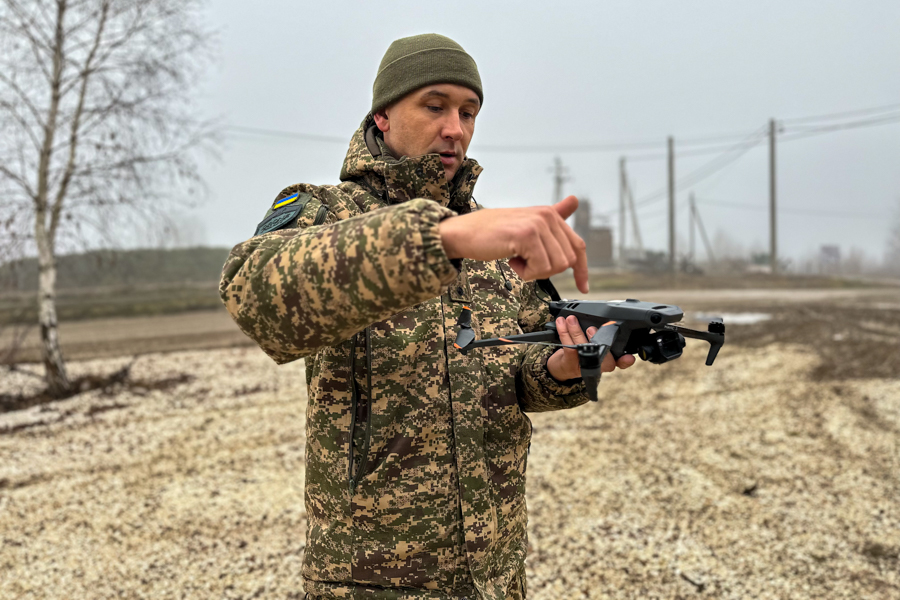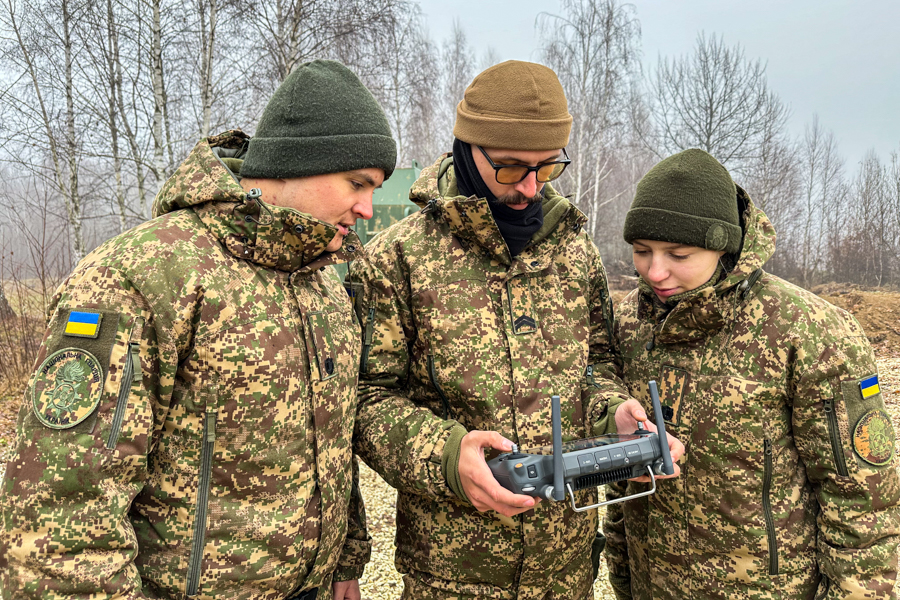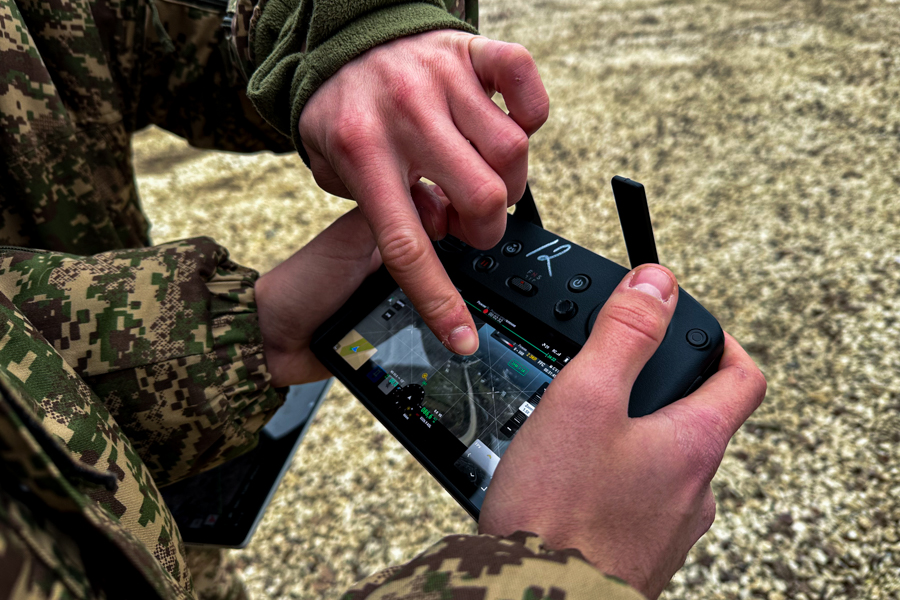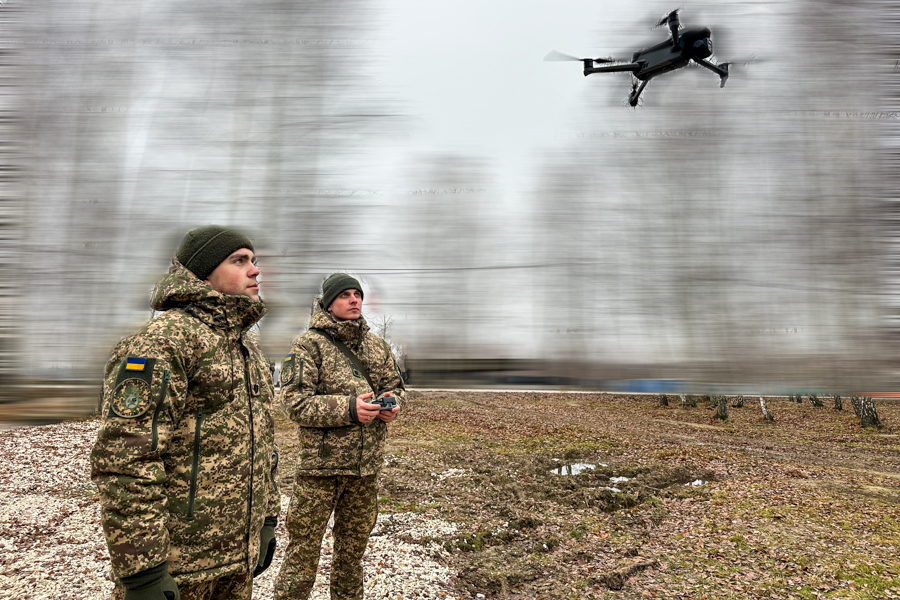Field training using UAVs: cadets’ preparation for the realities of combat operations

The lecturers of the Department of Unmanned Systems and Electronic Warfare conducted a set of field training in the discipline "Use of Information and Technical Means".
The exercises, which included both theoretical and practical stages, were aimed at developing in the cadets’ basic skills in working with unmanned systems capable of performing various tasks in a combat situation. One of the main topics of the training was the preparation of multirotor UAV for use.
"The classes held with the participation of second-year cadets became an important stage in their professional training, in particular in mastering modern methods of using unmanned aerial vehicles (UAVs). They are becoming increasingly important in modern military operations," – Senior Lecturer at the Department of Unmanned Systems and Electronic Warfare – Head of the Unmanned Aviation Systems Service Lieutenant Colonel Anton Voronin notes.
The first stage of the training was the preparation of unmanned aerial vehicles for flight. The cadets studied the technical characteristics of UAVs, the principles of their control and operation. In particular, special attention was paid to the adjustment of the devices, which included checking the technical condition, charging the batteries and flight devices. This allowed the cadets to gain basic knowledge and practical experience necessary for the effective use of UAVs in field conditions.
After preparation of the equipment, the cadets took off and landed a multirotor UAV for the first time. One of the main tasks of the field training was to teach the cadets the basics of piloting UAVs. For this the instructors prepared special exercises that helped the cadets consolidate their skills in controlling unmanned aerial vehicles at different stages of the flight. The cadets learned to perform maneuvers at low altitudes, change course and speed, and monitor the technical condition of the quadcopter during the flight. This was important not only for performing specific tasks, but also to ensure the reliability and safety of the equipment.
The next important stage was the planning and performing of flights along the specified routes. The cadets not only practiced the UAV flight routes, but also included elements of reconnaissance. They surveyed the territories, identifying and recording individual objects that were near the route. This helped them gain practical skills in collecting and analyzing intelligence information, which is an important part of modern military operations.
One of the important aspects that the cadets had to practice was the search for a hypothetical enemy in a forested area. The cadets learned to use UAVs effectively to detect enemy’s forces and equipment, even in difficult natural landscape conditions. During these exercises, special attention was paid to the transfer of collected data to weapons for operational response and the execution of relevant combat missions.
The final stage of the field training was the practice of tasks to defeat the enemy. The cadets were given the opportunity to use UAVs to perform tasks to defeat a hypothetical enemy — both personnel and equipment. This included conducting precision strikes using UAVs, which is an important component of modern military strategies. The cadets were able to understand how to plan effectively and implement combat operations using unmanned aerial vehicles to achieve tactical goals.
All actions of the cadets during the classes were broadcast through a specialized military application "Tower", which allowed monitoring the learning process in real time. Thanks to this, the head of the Department was able to observe the actions of the cadets, provide recommendations and correct their actions online. Such technological support provided a high level of feedback, which is important for an effective learning process. Using "Tower" allowed not only to monitor the learning process, but also to provide timely assistance to the cadets if necessary, which contributed to the rapid correction of errors and improvement of learning outcomes.
"During the field training, we were able to master in practice important skills that are the basis of modern combat training. In particular, we gained experience in working with unmanned aerial vehicles, learned to plan and carry out reconnaissance missions, and carry out precision strikes on enemy’s targets. The exercises became an important step in our professional training and preparation for performing tasks in real combat conditions", – cadet Anastasia Poltavchenko comments.
These field training, particularly with the use of UAVs, are an important component of modern military education and help cadets adapt to the latest technologies and methods of warfare, which are becoming increasingly important every year for ensuring the defense capability of the country.
Department of International Relations, Information and Communication of the NANGU









